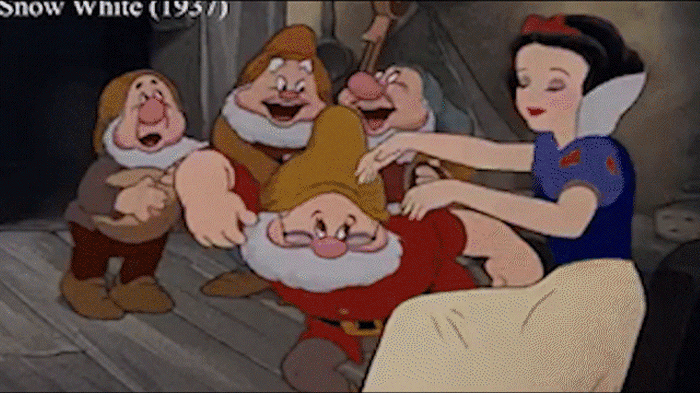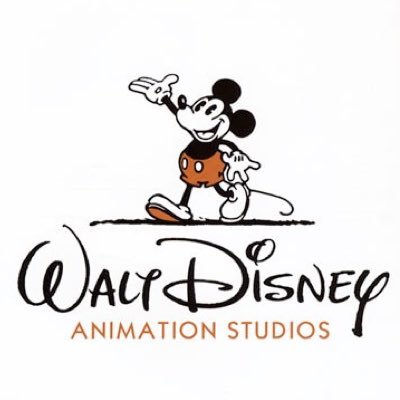For the longest time, the name Disney has been known for great animation. Have you ever found yourself wondering how artists, at Disney, breathe life into characters? How do they evoke such raw emotions in us through mere cartoons? Is there a method to do that- to create magic?
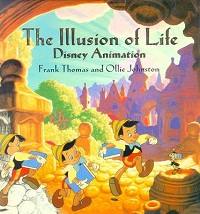
To find an answer to these questions, one needs to understand the finer technical points with the help the 12 principles of animation established by original Disney animators Frank Thomas and Ollie Johnston in the book called Illusion of Life.
In this book, that every budding animator should feast their eyes on, Johnston and Thomas examine the work of leading Disney animators from the 1930’s onwards and boil their approach down to 12 basic principles of animation. These principles form the basis of all animation work. They’re relevant for a number of different fields.
On their own, each of these principles appears simple. Even someone with no artistic ability can understand how each one contributes to the fluidity and natural feel of the project. For example, characters should anticipate their movements slightly rather than starting from an absolute zero. The movement should have an ease in and ease out motion to it, with more frames at the beginning and end of a character’s arc.
Speaking of arcs, the movement should always be in an arc shape as straight lines are less common in nature. But it’s when all these techniques begin to work in synergy with one another that the wizardry of Disney animation really shows through. These 12 principles establish a solid foundation and give animators a good starting point with some naturally-appealing characters. After that, they just mix them up in the goblet and watch the genie of animation rise.
Here are Disney’s 12 principles of animation :-

01. Squash and stretch
The squash and stretch principle is regarded as the most crucial of the 12 principles of animation. The purpose of this principle is to give your animated characters and objects the illusion of gravity, weight, mass and flexibility. Think about how a bouncing rubber ball may react when tossed into the air: the ball stretches when it travels up and down and squishes when it reaches the ground. In realistic animation, however, the most important aspect of this principle is the fact that an object’s volume does not change when squashed or stretched.

02. Anticipation
Anticipation aids to prepare the viewer for what’s about to happen. A dancer jumping off the floor has to bend the knees first; a golfer making a swing has to swing the club back first.

03. Staging
The purpose of this principle is using motion to guide the viewer’s eye and draw attention to what’s important within the scene. The essence of this principle is keeping the focus on what is relevant, and avoiding unnecessary detail.

04. Straight ahead action and pose to pose
There are two approaches to handle drawing animation: straight ahead and pose to pose. Each has its own benefits, and the two approaches are often fused. Straight ahead action involves drawing frame-by-frame from start to finish. If you’re looking for fluid, realistic movements, straight ahead action is your best bet.
With the pose to pose technique, you draw the beginning frame, the end frame, and a few key frames in-between. Then you go back and complete the rest. Mainly this technique is used to enhance the dramatic effect.

05. Follow through and overlapping action
When objects come to a standstill after being in motion, different parts of the object will stop at different rates. Similarly, not everything on an object will move at the same rate. This forms the essence of the fifth of Disney’s principles of animation.
If your character is running across the scene, their arms and legs may be moving at a different rate from their head. This is overlapping action. Likewise, when they stop running, their hair will likely continue to move for a few frames before coming to rest, this is follow through. These are important principles to understand if you want your animation to flow realistically.

06. Slow in and slow out
The best way to understand slow in and slow out is to think about how a car starts up and stops. It will start moving slowly, before gaining momentum and speeding up. The reverse will happen when the car brakes. In animation, this effect is achieved by adding more frames at the beginning and end of an action sequence. Applying this principle gives more life to the objects.

07. Arc
When working in animation, it’s best to stick with the laws of physics. Most objects follow an arc or a path when they’re moving, and your animations should reflect that arc. For example, when you toss a ball into the air, it follows a natural arc as the effects of the Earth’s gravity act upon it.

08. Secondary action
Secondary actions are used to support or emphasise the main action going on within a scene. Adding secondary actions help add more dimension to your characters and objects.
For instance, the subtle movement of your character’s hair as they walk, or perhaps a facial expression or a secondary object reacting to the first. Whatever the case may be, this secondary action should not distract from the primary one.

09. Timing
For this principle of animation we need to look to the laws of physics again, and apply what we see in the natural world to our animations. Timing is critical for establishing a character’s mood, emotion, and reaction.
If you move an object more quickly or slowly than it would naturally move in the real world, the effect won’t be believable. Using the correct timing allows you to control the mood and the reaction of your characters and objects. That’s not to say you can’t push things a little but if you do, be consistent.

10. Exaggeration
Too much realism can ruin an animation, making it appear static and dull. Instead, add some exaggeration to your characters and objects to make them more dynamic. Find ways to push the limits just beyond what’s possible, and your animations will pop.

11. Solid drawing
You need to understand the basics of drawing. This includes knowing how to draw in three-dimensional space and understanding form and anatomy, weight and volume, and lights and shadows.
While you can push the limits here, too, it’s important to remain consistent. If your world has wonky doors and a warped perspective, keep that perspective throughout the entire animation. Otherwise, things will fall apart.

12. Appeal
Your characters, objects, and the world in which they live need to appeal to the viewer. This includes having an easy-to-read design, solid drawing, and a personality. There is no formula for getting this right, but it starts with strong character development and being able to tell your story through the art of animation.
And if you have ever found wondering why certain scenes from Disney movies look familiar, it is likely that those scenes are products of a recycling technique called rotoscoping. When animators decide not to start from scratch, they utilise this technique which means tracing over animation that has already been released. Earlier on, rotoscoping allowed animators to churn out more realistic pieces of animation as they projected photographed live-action movie images onto a glass panel and traced over the image.

Snow White Rotoscoping
The projection equipment they used was called a rotoscope developed by Polish-American animator Max Fleischer. As the technology advanced, the device was replaced by computers, but the process is still called rotoscoping.
Here are a few movies that made extensive use of this method and recycled older footages:-
The Jungle book and Robin Hood
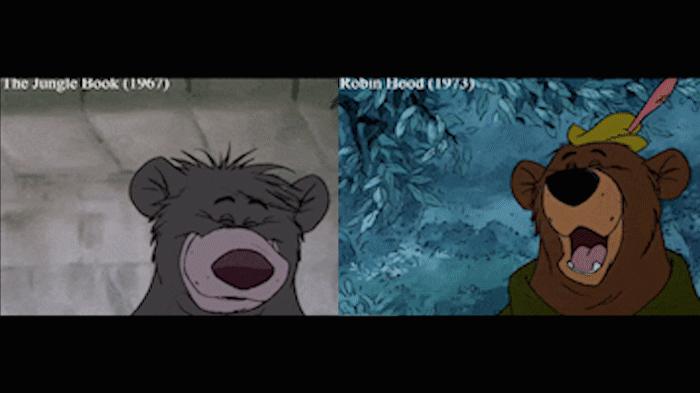
Aristocats and Robinhood
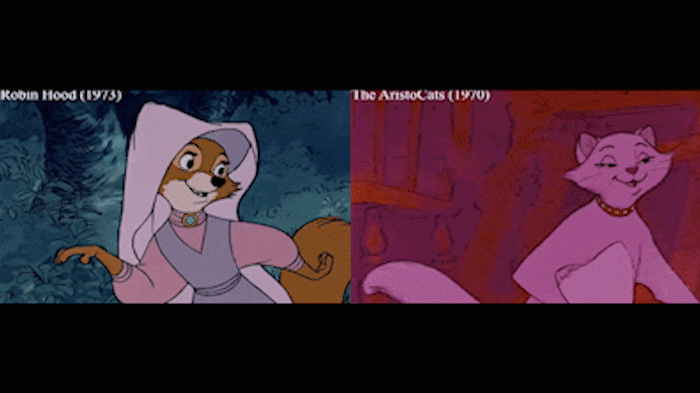
Snow White and Robinhood
